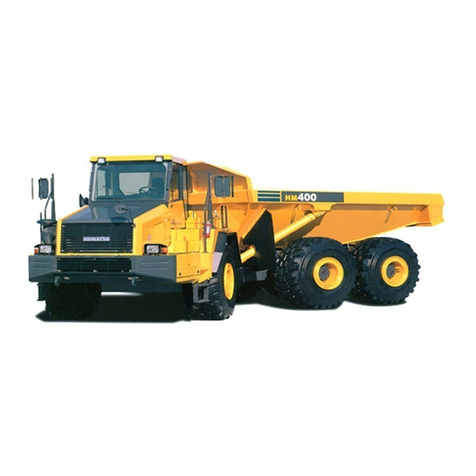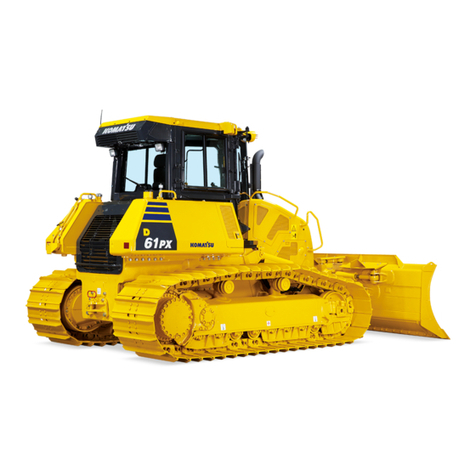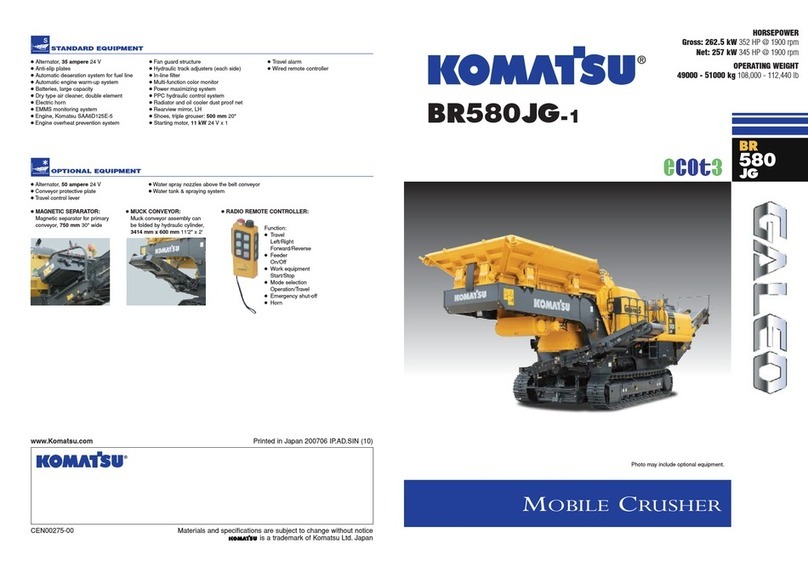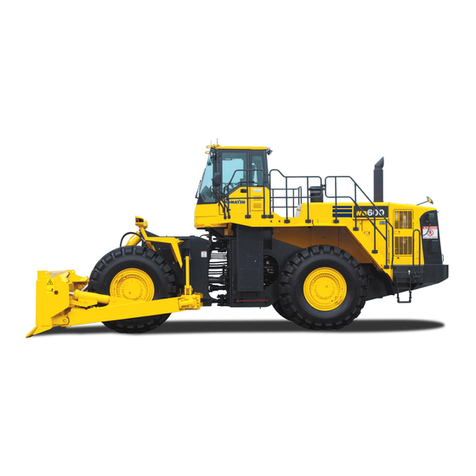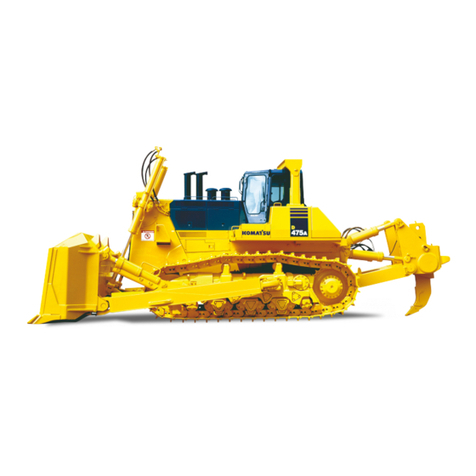
VIBRATION LEVELS
When used for its intended purpose, levels of vibration for the earth-moving machine transmitted from the oper-
ator's seat are lower than or equal to the tested vibrations for the relative machinery class in compliance with
ISO 7096.
FOR D37EX-24 :
The actual acceleration value for the hands and arms is less than or equal to 2.5 m/s2 , the uncertainty for this
value is 0.80 m/s2 according to EN12096:1997.
The actual acceleration value for the body is less than or equal to 0.5 m/s2, the uncertainty for this value is 0.29
m/s2 according to EN12096:1997.
FOR D37PX-24 :
The actual acceleration value for the hands and arms is less than or equal to 2.5 m/s2 , the uncertainty for this
value is 1.06 m/s2 according to EN12096:1997.
The actual acceleration value for the body is less than or equal to 0.5 m/s2, the uncertainty for this value is 0.27
m/s2 according to EN12096:1997.
These values were determined using a representative machine and measured during the typical operating con-
dition indicated below according to the measurement procedures that are defined in the standards ISO 2631/1
and ISO 5349.
VIBRATION - OPERATING CONDITION
TRACTOR DOZER (Dozing and spreading material through forward/reversing motion)
GUIDE TO REDUCE VIBRATION LEVELS ON MACHINE
The following guides can help an operator of this machine to reduce the whole body vibration levels:
1. Use the correct equipment and attachments.
2. Maintain the machine according to this manual
• Tire pressures (for wheeled machines), tension of crawler (for crawler machines)
• Brake and steering systems
• Controls, hydraulic system and linkages
3. Keep the terrain where the machine is working and travelling in good condition
• Remove any large rocks or obstacles
• Fill any ditches and holes
• Site manager should provide machine operators with machine and schedule time to maintain terrain
conditions
4. Use a seat that meets ISO 7096 and keep the seat maintained and adjusted
• Adjust the seat and suspension for the weight and size of the operator
• Wear seat belt
• Inspect and maintain the seat suspension and adjustment mechanisms
5. Steer, brake, accelerate, shift gears (for wheeled machines), and move the attachment levers and pedals
slowly so that the machine moves smoothly
6. Adjust the machine speed and travel path to minimize the vibration level
• When pushing with bucket or blade, avoid sudden loading; load gradually
• Drive around obstacles and rough terrain conditions
• Slow down when it is necessary to go over rough terrain
• Make the curve radius of travelling path as large as possible
• Travel at low speed when travelling around sharp curves
7. Minimize vibrations for long work cycle or long distance travelling
• Reduce speed to prevent bounce
VIBRATION LEVELS FOREWORD
1-6






